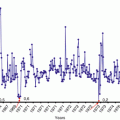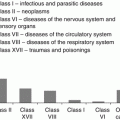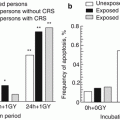(1)
Clinical Department, Urals Research Centre for Radiation Medicine, Chelyabinsk, Russia
Abstract
For a number of reasons, CRS is still little known as a distinct radiation-related pathology in man. Although clinical manifestations of the CRS were in detail described by Russian scientists as early as the 1950s, the first concise description of CRS was only presented by IRP in 2007 in Publication 103. The complex of symptoms which develops in individuals in cases of long-term (months to years) total-body exposures was designated by the term “chronic radiation syndrome.” Insufficient familiarity of the scientific community with CRS evidently resulted from the fact that cases of CRS were registered long ago (mostly in the 1950s) and predominantly in the Southern Urals. Cases of CRS among workers of the Mayak PA and residents of the Techa riverside villages were registered during the so-called cold war when the Soviet Union was speeding up the implementation of its atomic project with the aim to attain parity with the United States in terms of atomic weapons. The imperfections of the nuclear technologies and the system of radiation protection led in a number of cases to long-term (for years) radiation exposures of the workforce and the population at doses exceeding the threshold values for development of organ (tissues) effects. Beginning from the 1960s, as the technologies and radiation conditions at the atomic facilities were improving, new cases of CRS ceased to be identified. That is why, some researchers have gained an impression that the conditions for the development of CRS can hardly emerge nowadays, and, consequently, this pathology is no longer relevant. Nevertheless, the interest in the CRS phenomenon has not declined, a fact that can be accounted not only for a potential threat of situations involving long-term exposure of humans to radiation (e.g., astronauts under the conditions of long-term space flights, or general population in case of terrorist acts, etc.). Analysis of CRS cases can also provide an insight into the response of the human body at large to long-term whole-body radiation exposures and the relationship between the late (cancer and non-cancer effects) and early deterministic effects.
For a number of reasons, CRS is still little known as a distinct radiation-related pathology in man. Although CRS was in detail described by Russian scientists as early as the 1950s, the first concise description of CRS was only presented by IRP in 2007 in Publication 103. The complex of symptoms which develops in individuals in cases of long-term (months to years) total-body exposures was designated by the term “chronic radiation syndrome.” Insufficient familiarity of the scientific community with CRS evidently resulted from the fact that cases of CRS were registered long ago (mostly in the 1950s) and predominantly in the Southern Urals. Cases of CRS among workers of the Mayak PA and residents of the Techa riverside villages were registered during the so-called cold war when the Soviet Union was speeding up the implementation of its atomic project with the aim to attain parity with the United States in terms of atomic weapons. The imperfections of the nuclear technologies and the system of radiation protection led in a number of cases to long-term (for years) radiation exposures of the workforce and the population at doses exceeding the threshold values for development of organ (tissues) effects. Beginning from the 1960s, as the technologies and radiation conditions at the atomic facilities were improving, new cases of CRS ceased to be identified. That is why, some researchers have gained an impression that the conditions for the development of CRS can hardly emerge nowadays, and, consequently, this pathology is no longer relevant. Nevertheless, the interest in the CRS phenomenon has not declined, a fact that can be accounted not only for a potential threat of situations involving long-term exposure of humans to radiation (e.g., astronauts under the conditions of long-term space flights, or general population in case of terrorist acts, etc.). Analysis of CRS cases can also provide an insight into the response of the human body at large to long-term whole-body radiation exposures and the relationship between the late (cancer and non-cancer effects) and early deterministic effects.
Cases of CRS (formerly designated as “chronic radiation sickness” in Russia) have been adequately described for Mayak PA workers who were primarily exposed to external γ-radiation. As it has been noted in Chap. 1, chronic radiation sickness actually implied a clinical syndrome developing in man under the conditions of a long-term exposure to IR at cumulative doses and dose rates in excess of the respective threshold values which induced damage to the key (critical) organs and organ systems. It should be noted that in comparison to other chronic diseases, the term “CRS” is not used to just signify the body’s systemic response to the long duration of the disease; it actually characterizes the systemic response of the body, as a comprehensive whole, to a long-term (months to years) exposure to IR in man. Also, it would be unjustified to attribute the long-term effects of ARS to CRS.
The radiation conditions that emerged in the 1950s in the Techa riverside villages led to a long-term radiation exposure of the residents due to which some of them developed CRS. The critical system in exposed residents of the riverside villages was the hematopoietic system which was determined not only by a significant contribution of internal exposure of the RBM resulting from intakes of 90Sr with water and local food stuffs and also due to high radiosensitivity of the hematopoietic cells. The maximum values of exposure doses to the BM reached 9 Gy. Initially, the patients were examined by visiting teams of specialists from the USSR AMS Biophysics Institute (some of them were treated at the clinic of the Institute). Since 1955, the persons with CRS have been followed up at the Clinic of the URCRM of the Federal Medical-Biological Agency of Russia. This work represents the long-term follow-up results characterizing the dosimetric conditions contributing to the formation of CRS in residents of the Techa riverside villages, its clinical manifestations at the stage of the development and recovery, as well as the issues referring to pathogenesis, diagnosis, and treatment of this pathological condition.
As it has been shown by the earlier results of the follow-up of the Techa riverside residents, who had sustained CRS, the conditions of formation (duration of the latency period), clinical picture, clinical course (especially the duration of the recovery period), and late effects of CRS were determined not only by the exposure conditions (dose rate and absorbed dose to critical organs, distribution of doses over the body) and the structural–functional characteristics of tissues (the rate of cell renewal in tissues, their biological significance, etc.) but also by the individual characteristics of the person (initial health status, age, etc.). It should be noted that dose rates and organ doses determined both the formation of the syndrome and, also, its clinical manifestations. It is important to point out that the exposure dose rate to the RBM and the absorbed dose required for CRS development depended on each other, so that at higher dose rates, a smaller absorbed dose was required. The dependence on the dose rate and exposure dose was distinctly manifested by the duration of the latency period (the higher the dose, the shorter the latency period) and the incidence of CRS in some villages (the greater the dose to critical organs, the higher the probability of occurrence of the syndrome). The body’s specific characteristics exerted a most significant influence on the formation of CRS at exposure doses close to the threshold level and their values decreased with increasing exposure doses to critical organs.
Critical events for the development of CRS comprised changes in the hematopoietic and nervous systems. The earliest manifestations of CRS in the residents of the Techa riverside villages included functional changes, namely, impaired sense of smell and touch, and vegetative dysfunction. Later on, due to the continuing exposure, asthenic-type manifestations evolved. At the early stages, the functional changes in the nervous system represented manifestations of functional lability of the cortical centers and disturbances in the regulation of the activity of various organs and systems. The initial changes in the BM were also of functional nature; they brought about disturbances of the processes of cell differentiation and maturation. Delayed granulocyte maturation, accelerated erythrokaryocyte maturation, and impaired thrombocyte formation were the most typical early changes in the RBM. As it has been noted above, no marked morphological changes leading to BM hypoplasia were registered. Cytopenic manifestations of such changes in the RBM (most commonly leukopenia, neutropenia, and thrombocytopenia) were often transient and suggestive of CRS of low degree of severity (initial phase). Morphological changes in the critical systems developed rather infrequently, only in cases of CRS of moderate degree of severity, and at later stages of the syndrome.
It should be noted while analyzing CRS cases among residents of the Techa riverside villages that the highest doses were accumulated in the RBM and bone tissue due to the accumulation of 90Sr in the skeleton. The predominant exposure of these systems determined some of the specific features of the CRS clinical course associated with the uranium fission products. Long-term dynamic observations of persons with CRS showed that a determining effect on its character and manifestations was exerted by doses to tissues and the factor of time required for its formation. The most intense exposure of the residents of the Techa riverside villages which occurred in 1951 resulted mostly from external γ-radiation due to 137Cs and short-lived radionuclides. Naturally, the highest number of CRS cases diagnosed in the early years (until 1955) were registered in the villages of the upper reaches of the Techa River where the maximum doses of external γ-radiation were measured. Moreover, it is in the upper reaches of the river that all CRS cases identified were diagnosed as cases of moderate degree of severity. The data cited above are suggestive of the fact that the largest contribution to the formation of CRS among the Techa River population was made by a uniform external γ-radiation. The influence of 90Sr on the formation of RBM doses lasted for a longer period of time, and obviously, the influence of internal exposure slowed down the formation of hematological changes and prolonged the process of hematopoiesis recovery in residents of the Techa riverside villages. In addition to hematological and neurologic disturbances during the formation of the syndrome, persons with CRS manifested a complex of secondary nonspecific visceral changes in the digestive, endocrine, cardiovascular, and other systems, as a consequence of vegetative dysfunction and ostealgic syndrome. Immunosuppression observed in persons with CRS was evidently determined by the changes in hematopoiesis.
9.1 Epidemiology of CRS
As it has been shown in Chap. 2, residents of the Techa riverside villages were for multiple years exposed to radiation resulting from releases of liquid radioactive waste from the Mayak PA into the Techa River. The maximum releases took place in 1950–1952 due to which the residents, especially those living in the upper reaches of the river, were exposed to significant external γ-radiation. Thus, in the village of Metlino, the closest to the release site (7 km), the dose rates reached 3 μR/s in 1951. The dose rates of γ-radiation in the riverside villages were decreasing with distance from the release point and with time period after the peak of releases. Since 1953, the accumulation of exposure doses was primarily influenced by internal exposure to 90Sr and 137Cs. It should be mentioned that the contribution to internal dose in residents of the middle reaches of the river (from the village Muslyumovo located within 78 km of the release point) and in the lower reaches was prevalent throughout the period following the onset of contamination of the river system. About 8,000 residents of the Techa riverside villages situated in the upper reaches of the river were relocated in the 1950s. Thus, the highest external γ-dose rates were received by residents of the riverside villages located in closer proximity to the release site during the period of maximum releases.
Medical examinations of the riverside population were started in the summer of 1951, i.e., 1.5 years after the onset of the releases. The examinations were conducted by mobile teams of physicians of the Mayak PA Hospital and specialists of the Moscow Biophysics Institute who had already gained sufficient experience in diagnosing CRS in workers of the Mayak PA. It should also be pointed out that the physicians lacked information on individual exposure doses received by the riverside residents. The examinations conducted at that time were of a selective character; they were performed for individuals of both genders and different ages and did not cover the full population of the villages. Since 1955, the exposed residents of the Techa riverside communities have been given regular medical examinations at the URCRM Clinic. Verifications of CRS cases were performed twice, in 1959–1964 and in 1982–1985, taking into account the difficulties associated with diagnosing CRS. Of special importance for verification of CRS diagnoses were the results of the long-term follow-up of the patients’ health status, assessment of the concomitant pathology, and reconstruction of individual doses. The diagnosis verification was conducted taking into consideration the updated dosimetric data and the dynamics of clinical manifestations as a function of dose rate and cumulative organ doses. It is important to note that exposure doses were calculated for residents of the riverside villages on the basis of the so-called average-for-group estimates after the first diagnosis verification was complete. Individual organ doses were reconstructed only after the dosimetry system TRDS-2000 had been elaborated.
Based on the results of the 1959–1964 verification effort, diagnoses of CRS or suspicion of CRS diagnoses was registered for 940 persons. The prevalence of CRS was primarily determined by external γ-dose rates which depended significantly on the distance from the village location to the release site. The highest incidence of CRS was noted for residents of the upper and middle reaches of the river which correlated well with external γ-radiation dose rates during the period of maximum releases of radioactive waste. However, a considerable variability in the incidence of CRS was noted for a number of villages which was determined mostly by two factors: location of the village relative to the Techa River and the extent to which river water was used by the residents for their household use (cooking meals, doing laundry, watering kitchen gardens, etc.).
According to the results of the first diagnosis verification for residents of the Techa riverside villages, the cases of mild severity predominated. The distribution of patients by the degree of severity of CRS was as follows: mild severity, 899 cases (95.5 %), and moderate severity, 41 cases (4.5 %).
The highest number of CRS cases was diagnosed in the period 1955–1958, i.e., 6–9 years after the onset of radiation exposure or 3–6 years after the maximum dose of radiation exposure (1951). CRS was registered in 614 women (65.3 %) and 326 men (34.7 %) of different ages, including children and elderly people. Most frequently, CRS was identified in persons who were 20–49 years old during the period of maximum radiation exposures.
Regretfully, the values of threshold doses for the development of early manifestations of CRS which were mainly functional in nature have not been estimated up to the present. Evidently, they are somewhat lower than those estimated for the Mayak PA workforce which consisted of young healthy individuals, predominantly males. It is important to note that not all of the individuals whose exposure doses to critical organs exceeded 1.0–1.5 Gy developed CRS. Presumably, within the range of dose values close to the threshold, the individual characteristics (including the body’s individual radiosensitivity) play an important role, which under the conditions of chronic exposure at low dose rates are determined not so much by radiation damage to cells, as by the ability to repair the DNA damage. It has now been shown that the process of DNA damage reparation appears to be a determining factor in the development of the biological effects after exposure to low doses of radiation. Cell studies confirm the assumption that the activity of DNA response to damage and the process of its reparation are the main determinants of the effects of the dose/dose rate and the quality of radiation at the cellular level (ICRP, 2007).
9.2 Dosimetry
According to the results of the medical observations of Mayak PA workers, the threshold dose for a relatively uniform total exposure required for CRS development comprises 0.7–1.0 Gy per year and 2.0–3.0 Gy for the total period of exposure covering 2–3 years. According to other estimates, the lower limit of the threshold dose for the development of CRS caused by external γ-radiation in the Mayak PA personnel is 0.7 Gy and that of the dose rate is about 5.8∙10−4 mGy/ min.
Stay updated, free articles. Join our Telegram channel

Full access? Get Clinical Tree






